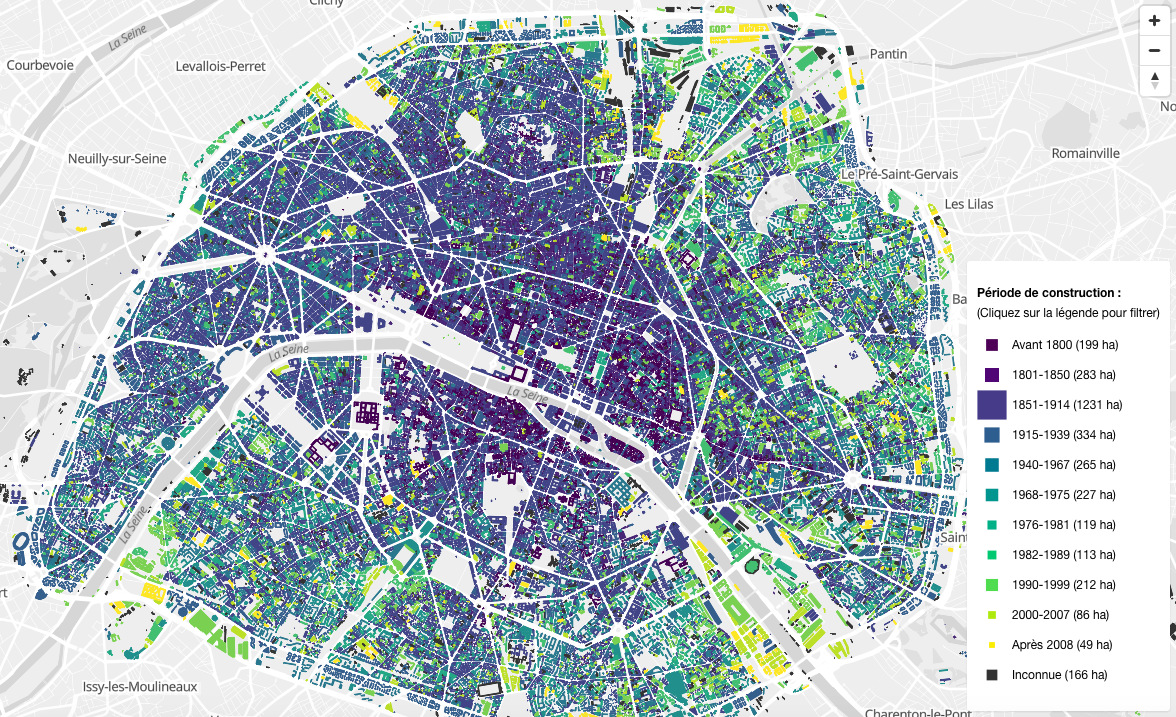
Map shows age of buildings in Paris

Paris is an amazing city. It represents a unique combination of magnificent architecture, beautiful scenery, culture and people. It is the city where the history, present and the future meet together in a single place.
The new map called BatiParis is a great tool to understand how the city evolved over time. It shows age of buildings footprints in the city with each building colored according to its year of construction. You can turn on and off each period of time to visualize the major stages of the Paris development.
The map reveals that most of the buildings here are from the 1851-1914 period so between the beginning of the Napoleon times, until the beginning of the First World War. BatiParis is a detailed map of Paris, France, which provides an intricate representation of the city’s buildings and structures. Developed as part of a research project (Francepixel (Bâti)), the map serves as a valuable tool for urban planning and architectural analysis. It offers high-resolution models that capture the architectural diversity of Parisian structures, ranging from historic landmarks to modern skyscrapers. BatiParis enhances understanding of the city’s spatial organization, making it a resource for professionals and enthusiasts interested in the intricate urban landscape of Paris.
FrancePixel (Bâti) is a mapping initiative dedicated to creating a highly detailed 3D representation of France’s urban and rural landscapes. By combining data from various sources, the project aims to offer realistic and accurate models of buildings, infrastructure, and topography. These models are valuable tools for urban planners, architects, and geospatial analysts, providing them with a virtual environment to simulate urban growth, assess building designs, and analyze the environmental impact of construction projects. Through the FrancePixel (Bâti) project, users can explore detailed 3D models of French cities, enriching their understanding of the urban environment and informing decision-making processes across different sectors.
![]()
Nice project.
Related topic: We could breach key limit set in Paris agreement by 2022
Did you like this post? Read more and subscribe to our monthly newsletter!









